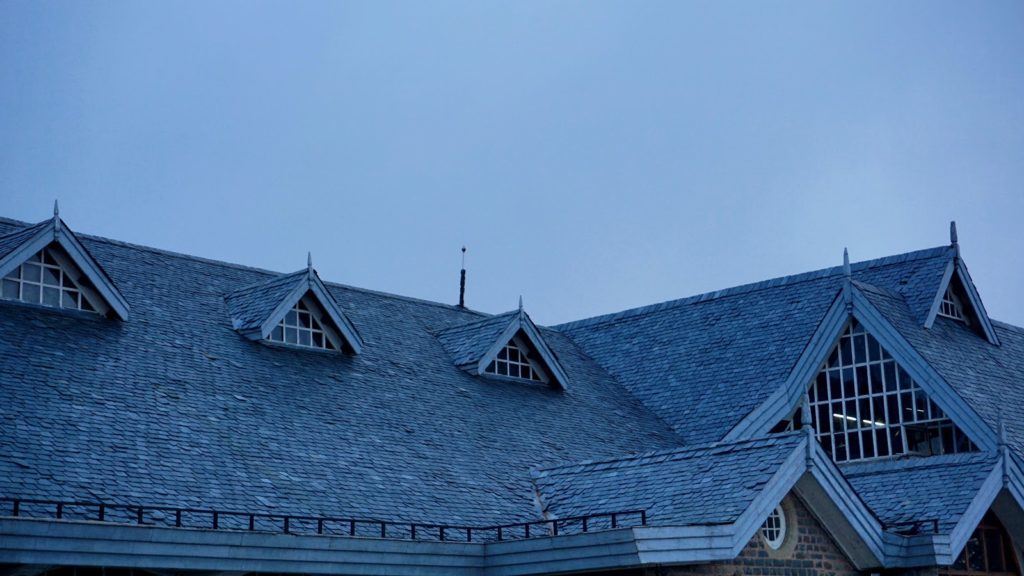As California enters the rainy season, many homeowners across the state will experience leaks and water damage from the downpours.
While there are various reasons why you may have a compromised roof, the majority of leaks come from flashing issues.
“In order for your roof to protect your home from water penetration, it must have a good drainage system.
Flashing is a critical component of that drainage system.
Flashing is used to seal and protect joints in the roof, making them waterproof while still allowing them to contract and expand with humidity and temperature fluctuations.”
Flashing is a thin layer of material, usually made out of steel, that keeps water from getting into places where it doesn’t belong.
When flashing becomes compromised, your home can experience severe water damage.
In order to inspect your flashing, you will need to be able to be able to recognize the types of flashing that you probably have – or should have.
Georgia Roof Advisors says that most sloped roofs have the following flashing types:
- Valley flashing is the most common type of roof flashing. It is a strip of metal with a profile shaped like an inverted “T”. Valley flashing is usually found in roof valleys, or where two roofing planes meet. The vertical fin acts as a barrier that prevents rainwater from flowing from one roofing plane and under another.
- Continuous and step flashing are installed where the roofing plane meets dormers and walls. Continuous flashing is installed on the side that’s parallel to the roof, while step flashing is installed on the sloped sides. The “steps” follow the overlaps on asphalt shingles.
- Drip edges are installed along the roof’s edge. The inverted L-shaped profile prevents rainwater from seeping back into the roof deck through capillary action.
- Rubber boots, also known as vent pipe flashing, are cone-shaped rubber flashing installed at the base of vent pipes. The cone is trimmed to match the pipe diameter during installation.
Common Flashing Problems
Cracked Flashing
Depending on the type, your flashing may be exposed or concealed.
Tar used to seal concealed flashing can wear down over time and crack.
If you have metal flashing that’s exposed, the rain, wind, and other elements can cause that flashing to deteriorate and crack.
Any cracks in your flashing will compromise the material and put you at risk for leaks.
Bent Flashing
While a bend in your flashing, especially a small one, may seem minor, this type of damage can lead to much larger issues later on.
When the protective coating that covers the steel of your flashing is damaged in any way, the structure starts to break down, corrode, and is less capable of protecting your home from leaks.
Missing Flashing
If you have flashing missing in any area along your roof, you need to address this immediately.
Even if water damage is not visible to you at this time, flashing is designed to keep runoff from entering your walls, pipes, windows, doors, and chimneys.
Without flashing in place, water has the opportunity to seep into these places, causing mold, rot, and other major damage.
Installing flashing the wrong way is almost as bad as not having flashing at all – contacting a professional to help you replace your flashing and evaluate any existing damage is your safest bet.

How To Prevent Flashing Issues
Make Sure Your Flashing Is Secure
Check your flashing and make sure there are no gaps or open seems.
If your flashing doesn’t seem tightly sealed in some areas, you will need to use caulking or roofing cement to re-secure.
Re-caulk And Fix Gaps
In order to re-seal flashing, you’ll need to carefully remove any existing shingles, and then chip away old caulking with a putty knife.
It’s a good idea to clean the material you’re working with so it will seal properly to the new cement.
Apply roofing cement or caulking compound generously on the flashing and re-seal.
Once you are satisfied that the seal is secure, replace your shingles (as long as they aren’t also damaged) over the flashing.
Fix Existing Holes
If you have holes in your flashing that don’t seem to compromise the integrity of the rest of the material, you can fill them rather than replacing the whole piece.
Start by cleaning the area you’re working on, and then roughing the area around the hole up with a bit of sandpaper.
This will help your roofing cement better adhere to the damaged area.
Cut a patch a little larger than the hole out of the same material as your flashing. Next, cover the hole with a liberal amount of roofing cement.
Apply your patch over the roofing cement. Make sure there are no gaps between the patch and the flashing – and don’t be afraid to add more cement if needed.
Get An Annual Inspection From An Expert
One of the best ways you can ensure the integrity of your roof – and your home – in this rainy season is by hiring a professional roofing company to give your home a thorough inspection every year.
These experts will be able to head off any potential problems before they get out of hand, and you will rest easy knowing that your house will be safe and dry all winter long.
We would love to help you with your roofing inspections and repair needs. Contact Hollister Roofing for a FREE quote today.
